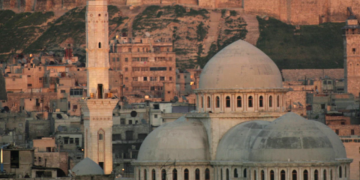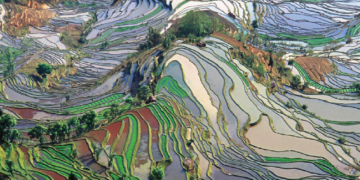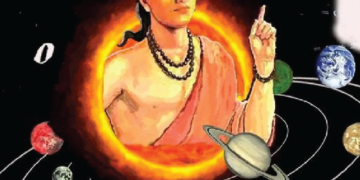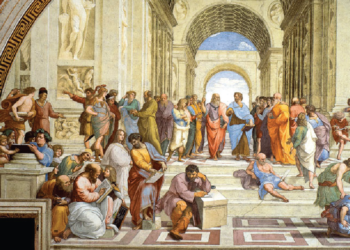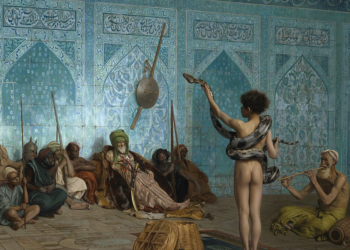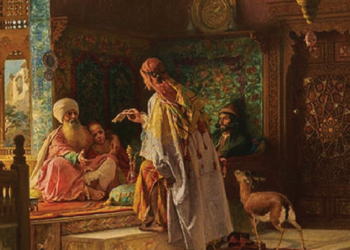Education in Indus Valley Civilisation
1) Educational institutes in Indus Valley:
The Indus Valley Civilization, flourishing around 2500 BCE to 1900 BCE, was an ancient urban society renowned for its advanced infrastructure and well-planned cities. Alongside its impressive urban planning and sophisticated trade networks, the civilization also had a well-established system of education. The educational institutes in the Indus Valley played a crucial role in imparting knowledge and skills to the inhabitants of this ancient civilization.
One of the notable features of the educational institutes in the Indus Valley was their presence in various urban centers. Excavations at sites such as Mohenjo-Daro and Harappa have unearthed structures that are believed to have served as educational institutions. These structures, oftenlocated close to residential areas, were designed to facilitate learning and intellectualdevelopment. They were an integral part of the city’s layout, emphasizing the significance placed on education in the Indus Valley Civilization.
The educational institutes in the Indus V alley likely had a diverse curriculum, catering to different areas of knowledge. The discovery of numerous seals and inscriptions suggests that writing and literacy were highly valued. This indicates the presence of a formal system of education that included reading, writing, and arithmetic. Additionally, the presence of specialized tools and artifacts related to craft production in these institutes implies that vocational training might have been an essential component of the educational system.
Archaeological findings have also revealed evidence of communal gathering spaces within the educational institutes. These spaces might have been used for group discussions, lectures, and the exchange of knowledge. The presence of these communal areas highlights the emphasis placed on interactive and collaborative learning in the Indus Valley Civilization. It suggests that education in this ancient civilization was not limited to the acquisition of knowledge but also fostered social and intellectual engagement among its inhabitants.
The educational institutes in the Indus Valley were likely accessible to a wide range of individuals. The planned nature of the cities and the availability of educational structures in multiple urban centers suggest that education was not restricted to a select elite. It is believed that both children and adults had access to these institutes, reflecting a society that valuedlifelong learning and intellectual development for all its members.
2) Professions in Indus Valley:
The Indus Valley Civilization, known for its well-organized urban centers and advanced trade networks, supported a thriving economy that relied on various professions and occupations.
The civilization’s economic prosperity can be attributed to the diverse range of professions practiced by its inhabitants. From skilled artisans to traders and agriculturalists, the people of the Indus Valley engaged in a wide array of professions that contributed to the civilization’s success.
One of the prominent professions in the Indus V alley was that of artisans and craftsmen. Skilled artisans specialized in various crafts such as pottery, metalwork, jewelry making, and textile production.
The exquisite artifacts discovered from the archaeological sites of Mohenjo-Daro and Harappa bear testimony to the exceptional craftsmanship of the Indus Valley artisans. Their expertise and attention to detail resulted in the creation of intricate and aesthetically pleasing objects, which were highly valued in both local and long-distance trade.
Agriculture played a pivotal role in the Indus Valley Civilization, and farmers formed a significant segment of the population. The fertile alluvial plains of the Indus River facilitated agriculture, allowing the cultivation of a variety of crops such as wheat, barley, millet, and cotton. Farmers in the Indus V alley engaged in irrigation techniques to maximize crop yields, utilizing a system of canals and reservoirs for effective water management. The agricultural profession was vital for sustaining the growing population and providing food security to the civilization.
Trade and commerce flourished in the Indus Valley Civilization, connecting distant regions through an extensive network. Traders played a crucial role in facilitating the exchange of goods, both within the civilization and with neighboring regions.
The presence of well-developed trade routes, seals, and standardized weights suggests a highly organized system of trade. Traders dealt in a wide range of commodities, including agricultural products, textiles, pottery, and precious metals, which contributed to the economic prosperity of the civilization.
Priests and religious practitioners held an essential position in the Indus Valley society. They played a significant role in religious rituals and ceremonies, maintaining a connection between the spiritual realm and the everyday lives of the people.
The presence of elaborate religious structures and artifacts, such as the Great Bath at Mohenjo-Daro, indicates the importance of religious practices in the civilization. Priests and religious practitioners served as intermediaries between the people and the divine, ensuring spiritual well-being and harmony within the society.
The Indus Valley Civilization also had administrative professionals responsible for the governance and management of the cities. These individuals oversaw the maintenance of infrastructure, collection of taxes, and enforcement of laws.
Their roles were crucial in maintaining order and ensuring the smooth functioning of the urban centers. Administrative professionals possessed the knowledge and skills necessary for efficient city planning, resource allocation, and public services.
3) Technical Education in Indus Valley:
The Indus Valley Civilization, known for its advanced urban planning and remarkable engineering feats, had a sophisticated system of technical education. The civilization’s emphasis on practical knowledge and technical skills played a vital role in the development of its architectural marvels, urban infrastructure, and advancements in various technical fields.
One of the key aspects of technical education in the Indus Valley was the training of skilled craftsmen and artisans. These individuals received specialized instruction in disciplines such as pottery, metallurgy, jewelry making, and textile production.
The educational institutes in the civilization provided a structured learning environment where aspiring craftsmen honed their skills and acquired the knowledge necessary for their respective trades. Through rigorous apprenticeships and practical experience, craftsmen developed mastery in their crafts, ensuring the production of high-quality and intricate artifacts.
The Indus Valley Civilization also placed significant importance on construction and engineering. The advanced urban planning and engineering techniques employed in the creation of the well-organized cities of Mohenjo-Daro and Harappa bear testimony to the civilization’s expertise in this field.Technical education in the Indus Valley included training in areas such as city planning, architectural design, and civil engineering.The educational institutes provided aspiring architects and engineers with the necessary knowledge and skills to construct robust buildings, efficient drainage systems, and intricate water supply networks.
The knowledge and expertise in metallurgy were another significant aspect of technical education in the Indus Valley. The civilization had a sophisticated understanding of metalworking techniques, evident from the intricately crafted copper and bronze artifacts found in archaeological excavations. Technical education in metallurgy encompassed the extraction, purification, and shaping of metals. The educational institutes in the Indus Valley likely imparted knowledge about metal alloys, casting methods, and metalworking tools, ensuring the production of high-quality metal objects.
The civilization’s proficiency in agricultural practices was also a result of technical education. Farmers in the Indus Valley received training in irrigation techniques, crop rotation, and soil management. The educational institutes likely provided instruction on efficient water distribution, canal construction, and flood control measures. This technical knowledge contributed to the civilization’s ability to cultivate a variety of crops and achieve agricultural sustainability, ensuring food security for its population.
Furthermore, technical education in the Indus Valley encompassed other fields such as pottery production, textile weaving, and seal making. These technical skills were crucial for the civilization’s economic activities and trade networks. The educational institutes facilitated the transfer of knowledge and expertise in these specialized areas, ensuring the production of high-quality goods that were in demand both within the civilization and in distant trading partners.
4) Religious education in Indus Valley:
Religion played a significant role in the lives of the people of the Indus Valley Civilization, and religious education formed an integral part of their society. The civilization’s religious beliefs and practices were diverse and intricate, and the educational institutes played a crucial role in imparting religious knowledge and nurturing spiritual development.
The educational institutes in the Indus Valley likely had dedicated spaces and teachers for religious education. These institutes served as centers where individuals, particularly priests and those interested in religious matters, could receive instruction in religious rituals, beliefs, and customs. The teachings aimed to deepen understanding of the spiritual realm and foster a connection between the people and the divine.
One of the focal points of religious education in the Indus Valley was the training of priests. These individuals played a central role in religious ceremonies, ensuring the proper performance of rituals and maintaining spiritual harmony within the society. The educational institutes provided comprehensive training to aspiring priests, equipping them with the knowledge of prayers, hymns, incantations, and the proper conduct of religious rites. The teachings encompassed aspects of deity worship, cosmology, and religious philosophy.
The religious education in the Indus Valley likely included instruction on the interpretation of sacred texts and scriptures. While the exact nature and content of these texts remain largely unknown due to the lack of deciphered writing, the presence of seals and inscriptions suggests that written religious texts were an important aspect of the civilization’s religious education.
Scholars and individuals pursuing religious studies might have received specialized instruction in reading and interpreting these texts, allowing for a deeper comprehension of religious doctrines.
Rituals and ceremonies formed an integral part of religious practice in the Indus Valley Civilization. The educational institutes provided training in the performance of these rituals, ensuring their proper execution and adherence to religious customs.
Individuals interested in religious education would have learned the intricate details of various ceremonies, such as offerings, purification rites, and communal gatherings. The educational institutes served as spaces for practical instruction and experiential learning, enabling individuals to actively participate in religious rituals.
Moreover, religious education in the Indus Valley likely emphasized moral and ethical values. The teachings would have instilled virtues such as compassion, honesty, and respect for others. The educational institutes aimed to shape individuals’ characters and guide them towards leading righteous lives, grounded in the principles and teachings of the civilization’s religious beliefs.
5) Economics of Indus Valley:
The Indus Valley Civilization, one of the earliest urban societies, boasted a thriving economy built on trade, agriculture, and craftsmanship. The economic system of the Indus Valley was characterized by its sophisticated urban planning, extensive trade networks, agricultural practices, and the production of high-quality goods. These elements contributed to the civilization’s economic prosperity and stability.
Trade played a crucial role in the economy of the Indus Valley Civilization. The civilization’s well-developed trade networks connected distant regions, facilitating the exchange of goods and ideas. Excavations at sites like Lothal, a prominent trading port, have revealed evidence of dockyards, warehouses, and specialized trade-related structures. The civilization engaged in both local and long-distance trade, trading goods such as agricultural produce, textiles, pottery, metalwork, and precious stones. The presence of standardized weights, seals, and trade-related artifacts indicates the existence of a highly organized system of trade within the civilization.
Agriculture formed the backbone of the Indus Valley economy. The civilization thrived in the fertile alluvial plains along the Indus River, which provided an ideal environment for cultivation. The agricultural practices of the Indus Valley Civilization were highly advanced for their time, with sophisticated irrigation systems, including canals and reservoirs, used to harness the river’s waters. The civilization cultivated a variety of crops, including wheat, barley, millet, peas, cotton, and sesame. The surplus agricultural produce not only sustained the growing population but also served as a source of trade and exchange.
Craftsmanship was another significant aspect of the Indus Valley economy. Skilled artisans and craftsmen excelled in various trades, producing exquisite pottery, metalwork, jewelry, and textiles. The craftsmanship of the Indus V alley was known for its attention to detail and artistic finesse. The artifacts produced by these skilled artisans were highly valued and sought after, contributing to both local consumption and long-distance trade. The civilization’s expertise inmetallurgy, evidenced by the intricate copper and bronze objects, further enhanced its economicprowess.
The economic system of the Indus Valley Civilization was supported by a sophisticated urban infrastructure. The cities were meticulously planned, with well-organized residential areas, marketplaces, and public buildings. The presence of granaries and storage facilities indicates efficient storage and distribution systems for agricultural produce. The layout of the cities fostered economic activities and facilitated trade, with designated areas for craftspeople, merchants, and administrative functions. The urban centers served as hubs of economic exchange and played a vital role in sustaining the economic stability of the civilization.
The Indus Valley Civilization also had a system of taxation and resource management. The presence of seals and sealings suggests administrative control and record-keeping related to economic transactions and taxation. The taxation system likely contributed to the maintenance of public infrastructure, trade facilitation, and the provision of essential services within the civilization.


